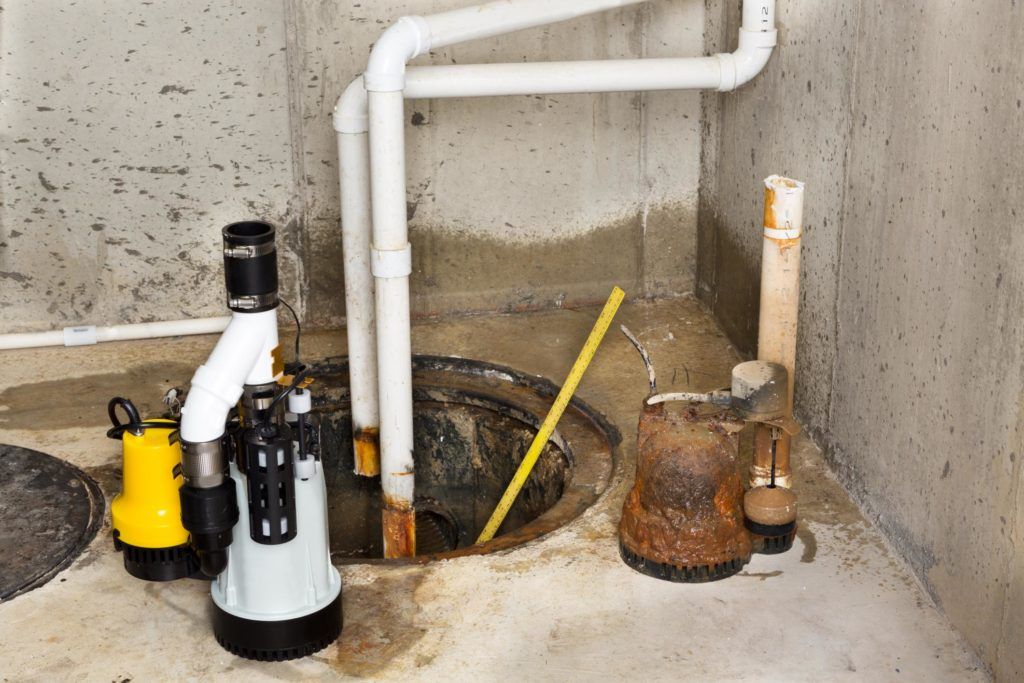Sump Pumps Palmdale, CA

Effective Sump Pump Installation: Key Tips for Homeowners
A sump pump Palmdale, CA is specifically a specialized plumbing appliance intended to pump water out of a property and to pump it to a safer location, usually a lower level. Homeowners may be more familiar with sump pumps as a result of their frequent use in cases of severe flooding, especially in low-lying areas or other areas where the risk of flooding is high. In the US, however, sump pumps are used in many different settings and can be found in different types of homes - even mobile homes. Here are some basics about sump pumps and their installation.
Sump pumps are typically set up in pits that have pit pits at the bottom and in some cases, these pits may be made from concrete. There are several benefits to using sump pumps to prevent flooding in your basement. First, they take care of flooding by eliminating the potential for standing water in your basement. This makes your basement safer and can make it more comfortable to live in.

Contact Us
We will get back to you as soon as possible.
Please try again later.
How do you prepare for Installation?
Before you can begin the sump pump installation, you need to determine the best location for your sump pumps. The best location will depend on the size and design of your home. It also depends on the size and design of your pit. A well-built, deep pit will require a deeper hole than a thinner, wider pit. A well-built pit will also require a custom septic pump that will allow it to handle all of the water that it disposes of.
Sewage inspections are generally required for all residences regardless of whether they have sump pumps. To remove water away from your basement without flooding it, you will need to locate a discharge pipe that leaves the sump pumps. A discharge pipe will usually connect to an exterior plumbing fixture such as a septic tank. When you install your system, you will connect the discharge pipe to the tank.
You should also make sure that the area where the drainage pipe exits are free from trees or other obstacles that may obstruct the pipes. You may also want to install a sump pump shock, a circuit breaker, and a battery backup in case your power goes out. Power is one of the most important parts of installing sump pumps because it allows the pump to function properly and efficiently. Without power, the pump cannot maintain a normal flush throughout your system.
If your system does not have a sump pump, then you need to use a float switch. This switch allows you to regulate the water level in your basement. You should also install a pressure switch. This switch makes sure that the pump isn't causing damage to pipes. These devices allow you to test your system to ensure that it is working properly before you drain any water.
How to Install a Sump Pump?
When you are installing sump pumps, you should only use the correct ones for the type of water that you have in your basement. If you are unsure what type of sump pump you should use, then you should contact a professional who can help you. When you are installing your new one, you should only cut the existing pipe if necessary. You should then insert the new one and secure it with screws or hooks.
Installing submersible sump pumps can be a little difficult. There are many things that you need to know, so it is a good idea to talk to a professional before you attempt to do it yourself. There are many different types of pumps that you can choose from. These pumps are great for removing the excess water in case of any basement water damage. Once you have installed your new one, you will be able to prevent the water damage from occurring again.
Common Mistakes to Avoid During Sump Pump Installation
Sump pump installation can be tricky, and even small errors can lead to major issues down the road. One of the most common mistakes is incorrect placement of the pump. If the sump pump isn't placed in the lowest part of the basement, it may not effectively remove water, leading to potential basement leak repair issues. Homeowners also often underestimate the importance of the pit depth and size. A shallow pit might overflow, while a pit that’s too deep may put unnecessary strain on the pump. Proper sealing is essential to prevent any leaks, as poor sealing can lead to water seepage that undermines the pump's efficiency. Additionally, an improper drainage slope can cause water to backflow, requiring costly repairs and potentially foundation repair work. Lastly, choosing the wrong pump size can lead to system inefficiency—an undersized pump won’t keep up with heavy rainfall, while an oversized pump can cycle too quickly, reducing its lifespan. By avoiding these mistakes, homeowners can save themselves from needing basement foundation repair or other related services.
The Importance of Regular Sump Pump Testing
Even the best-installed sump pump can fail without regular testing and maintenance. Regularly testing your sump pump ensures it’s ready to handle water removal during heavy rainstorms or flooding. It’s particularly important for homes in areas where waterproofing foundation solutions are common. Begin by testing the float switch to ensure it activates when water levels rise. Inspect the discharge pipe to ensure water flows freely and there are no blockages or leaks that could lead to a basement leak repair near me situation. Additionally, checking the power supply is crucial. Many homeowners opt for a battery backup in case of a power outage, ensuring that the sump pump still functions during a storm. Testing your sump pump before the rainy season or when preparing for extreme weather can save you from unexpected water damage.
How to Choose the Right Sump Pump Size for Your Basement
Sump pump size plays a critical role in how well your system handles water flow. Choosing the right size is essential to prevent the need for frequent foundation repair company visits. If your pump is too small, it won’t be able to keep up with the volume of water during heavy rains, leading to possible basement flooding. On the other hand, a pump that’s too large may cycle inefficiently, causing it to wear out faster. To determine the right pump size, consider the square footage of your basement, the depth of your pit, and the typical water volume in your area. For homes in regions with heavy rainfall, like Palmdale, CA, it’s important to consult with a professional to ensure the sump pump you choose meets the local needs for basement waterproofing. The difference between submersible and pedestal pumps should also be considered, as submersible pumps are quieter and more efficient for large volumes of water, while pedestal pumps are easier to access for repairs.
Understanding Sump Pump Backup Systems: Why You Need One
A primary sump pump is essential for water removal, but what happens when the power goes out during a storm? Backup systems, whether battery-powered, water-powered, or generator-based, provide essential support in emergencies. Battery-powered systems are common and can run for hours after an outage, while water-powered systems use water pressure to pump out excess water. Generator systems provide the most reliable backup but can be more expensive to install. Every homeowner with a sump pump, particularly those who have invested in waterproofing foundation solutions, should consider a backup system. These systems can prevent flooding and costly basement foundation repair in the event of a power outage or primary pump failure.
Signs Your Sump Pump Needs Repair or Replacement
Sump pumps, like any appliance, have a limited lifespan, and recognizing the signs of wear and tear can save you from more extensive basement leak repair or foundation repair company services down the line. If you notice unusual noises, such as grinding or rattling, it may indicate that parts are wearing out. Frequent cycling, where the pump turns on and off more often than normal, can signal that the pump is too small for your home’s needs or that there’s an issue with the float switch. Visible rust or corrosion on the pump, discharge pipe, or other components is another sign that it may be time for a replacement. Additionally, if your sump pump has been in use for more than ten years, it’s a good idea to replace it to avoid potential water damage. By staying on top of sump pump maintenance and knowing when it’s time for a replacement, you can prevent the need for major repairs, like basement waterproofing or foundation repair.
In conclusion, effective sump pump installation, regular maintenance, and choosing the right size and backup system are essential to protecting your home from water damage. Avoid common installation mistakes, keep your system tested, and act quickly when signs of wear appear to ensure your basement stays dry and your foundation repair company visits are minimal.
Our blog offers expert advice, detailed how-tos, and valuable information to ensure your home stays strong and well-protected. Click here to explore!
